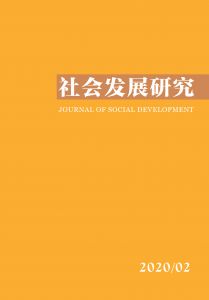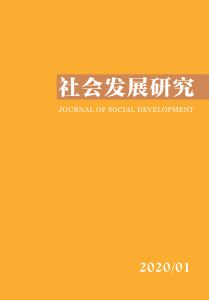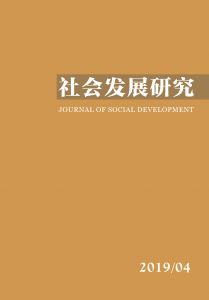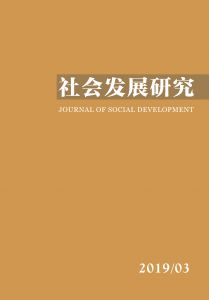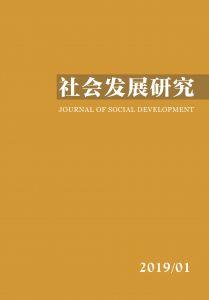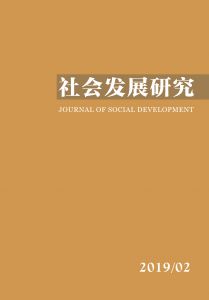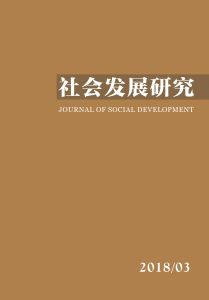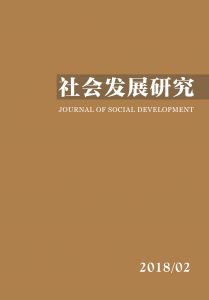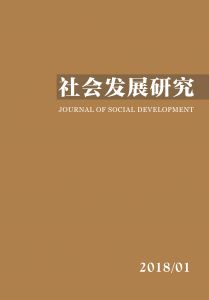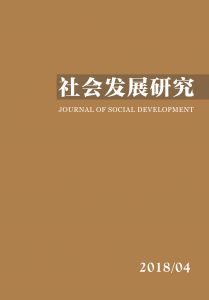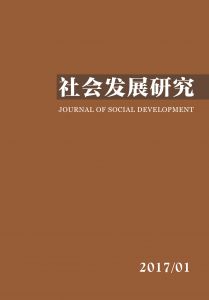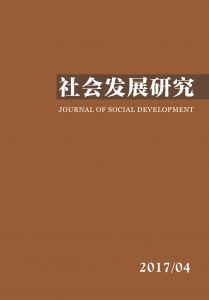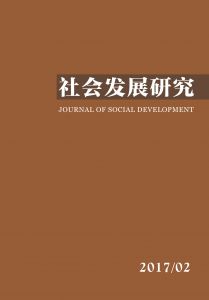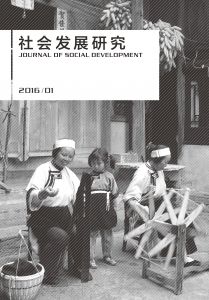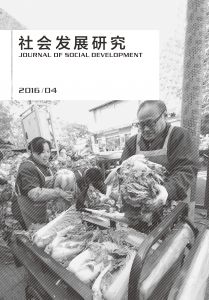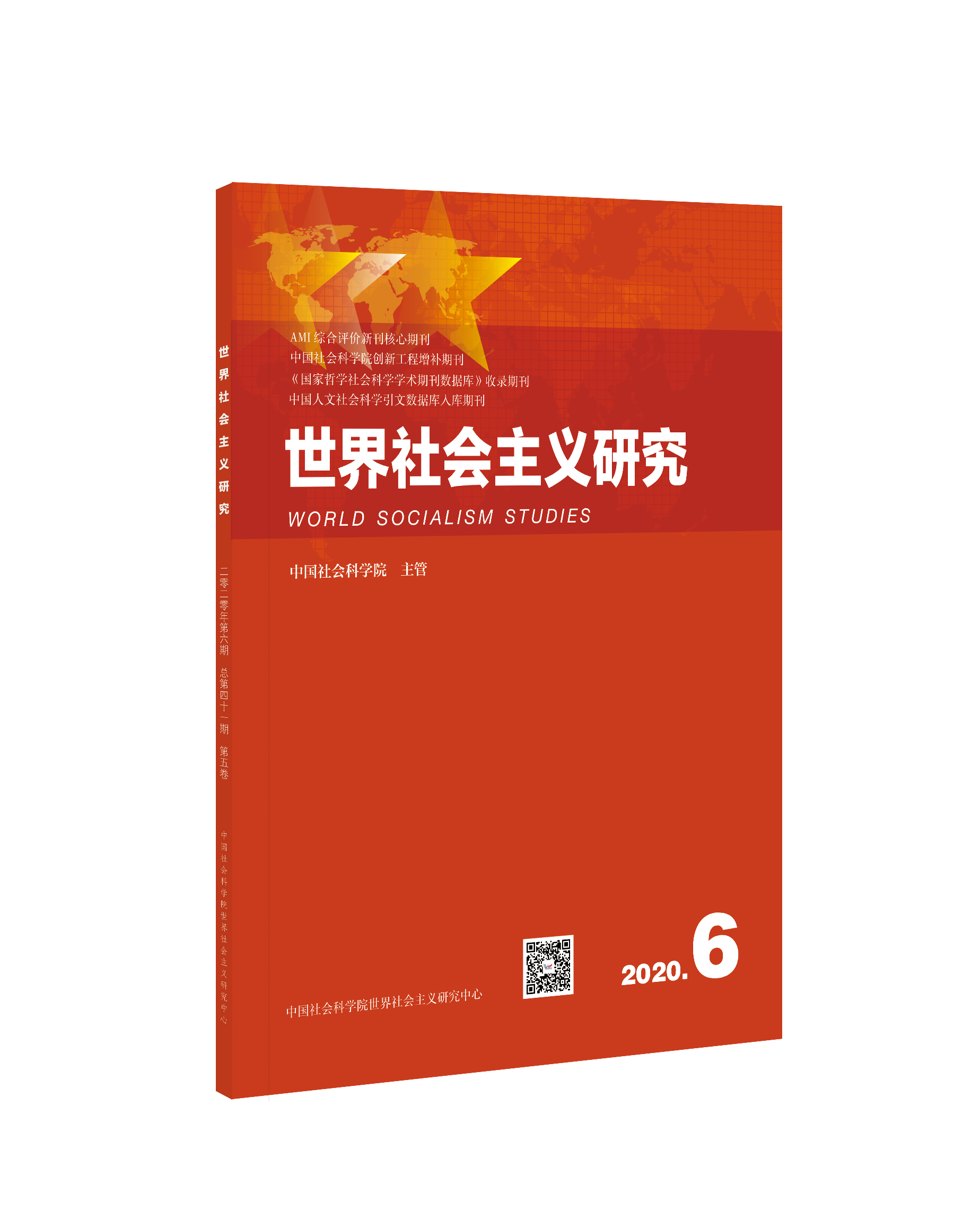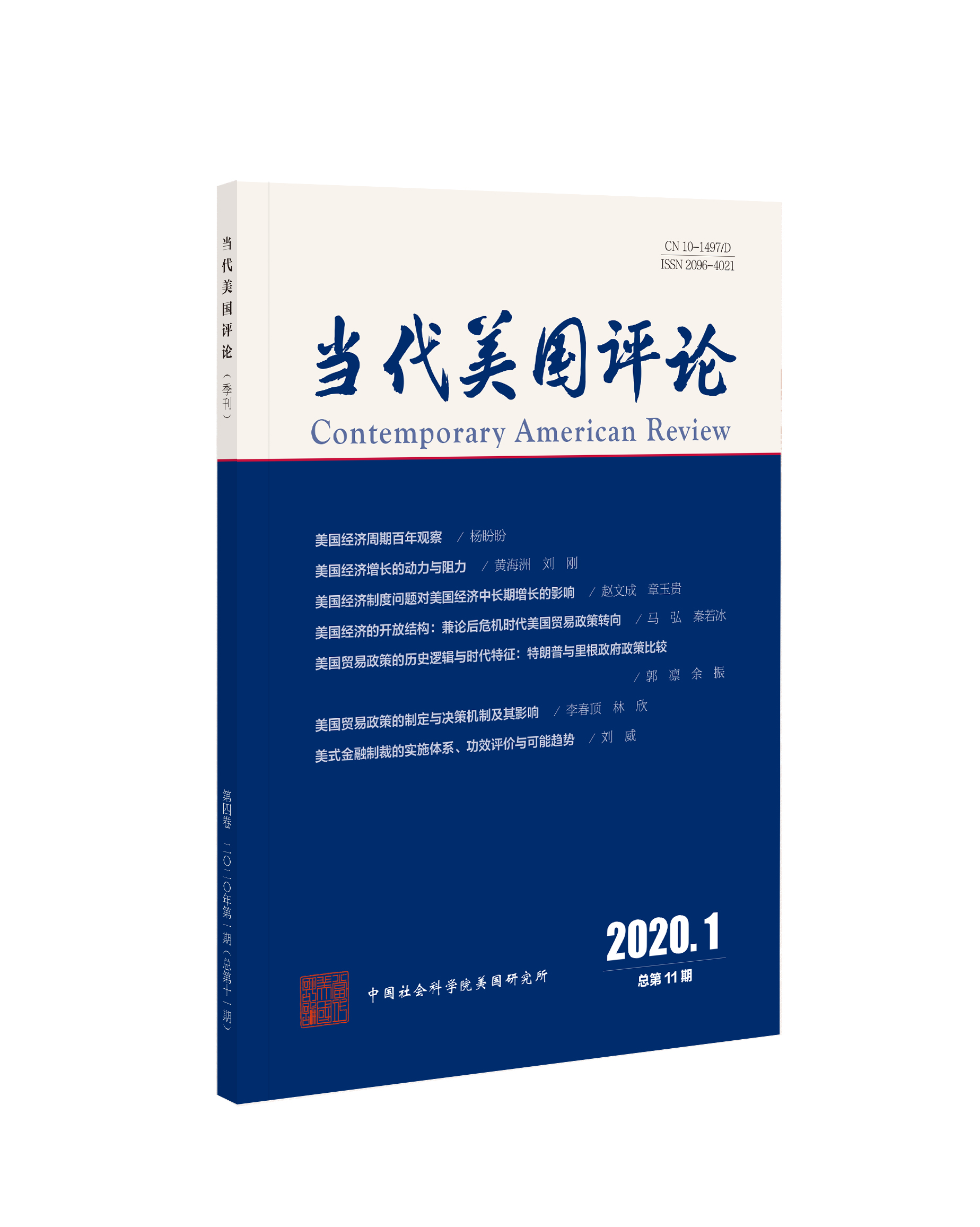最新期刊
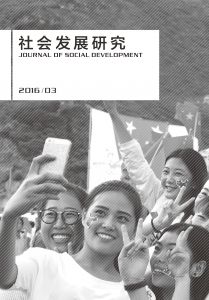
目录
过往期刊
参考文献
-
编委会
-
·论文·
-
互联网与公共参与
-
符号分层:私营企业主的政治嵌入模式及其地位认同差异
-
中国城市家庭亲子关系结构及社会阶层的影响
-
劳动、工作伦理与农民工的权能感
-
中国传统“制度”概念中的“制度精神”与“史实现象”
-
政府内部上下级间的责任配置互动
-
生命历程视角下的农民工社会融入研究
-
-
·调査报告·
-
长期照护筹资模式:OECD国家的经验与中国三城市的实践
-
“地方债”形成与扩张的双重动力机制
-
-
·研究述评·
-
参照群体理论评述
-
-
·马克思主义学习与研究专栏·
-
试论马克思的异化劳动思想
-
“两个批判”中的异化历史
-
-
·书评·
-
人文、生态与社区
-
身份认同的新出路
-
-
英文目录及摘要
-
稿约
-
版权页
按年份浏览:
- 全部
- 2020
- 2019
- 2018
- 2017
- 2016
- 2015
- 2014
[1][1]陈陆辉、耿曙,2008,《政治效能感与政党认同对选民投票抉择的影响——以2002年北高市长选举为例》,《台湾民主季刊》第1期。
[2][2]陈云松,2013,《互联网使用是否扩大非制度化政治参与——基于CGSS2006的工具变量分析》,《社会》第5期。
[3][3]陈潭、罗晓俊,2011,《中国网络政治研究:进程与争鸣》,《政治学研究》第4期。
[4][4]亨廷顿、纳尔逊,1989,《难以抉择》,汪晓寿等译,北京:华夏出版社。
[5][5]胡荣,2008,《社会资本与城市居民的公共参与》,《社会学研究》第5期。
[6][6]黄荣贵、桂勇,2010,《互联网与业主集体抗争:一项基于定性比较分析方法的研究》,《社会学研究》第5期。
[7][7]黄荣贵,2010,《互联网与抗争行动:理论模型、中国经验及研究进展》,《社会》第2期。
[8][8]黄纪,2008,《因果推论与观察研究:“反事实模型”之思考》,《社会科学论丛》第1期。
[9][9]黄纪,2010,《因果推论与效应评估:区段识别法及其于“选制效应”之应用》,《选举研究》第2期。
[10][10]李培林,2008,《力挽狂澜:中国社会发展迎接新挑战》,汝信等主编《2009年社会形势预测与分析》,北京:社会科学文献出版社。
[11][11]李培林,2010,《加强对群体性事件的研究和治理》,《中国社会科学报》第11期。
[12][12]刘嘉薇,2009,《政治信息影响政治态度之定群追踪研究:媒介抑郁论与良性循环论的意涵、运用与展望》,研究计划:NSC98-2410-H305-065-MY2。
[13][13]诺曼,尼,西德尼·伏巴,1996,《政治参与》,竺乾威译,北京:商务印书馆。
[14][14]章荣军,2001,《当代我国农民非制度化公共参与的原因探析》,《人文杂志》第1期。
[15][15]中国互联网络信息中心,2008,《中国互联网络发展状况统计报告》(http://www.cnnic.net.cn/hlwfzyj/hlwxzbg/index_3.htm)。
[16][16]中国互联网络信息中心,2010,《中国互联网络发展状况统计报告》(http://www.cnnic.net.cn/hlwfzyj/hlwxzbg/index_3.htm)。
[17][17]周葆华,2011,《突发公共事件中的媒体接触、公众参与与政治效能》,《开放时代》第5期。
[18][18]Acemoglu,D.,S. Johnson & J.A. Robinson 2000,The colonial origins of comparative development:An empirical investigation (No. w7771). National Bureau of Economic Research.
[19][19]Almond,G. A. & S. Verba 1963,The civic culture:Political attitudes and democracy in five nations . New Jersey:Princeton University Press.
[20][20]Andrews,Kenneth T. & Michael Biggs 2006,“The Dynamics of Protest Diffusion:Movement Organization,Social Networks,and New Media in the 1960 Sit-Ins.” American Sociological Review 71(5).
[21][21]Angrist,Josh D. 1990,“Lifetime Earnings and the Vietnam Era Draft Lottery:Evidence from Social Security Administrative Records.” The American Economic Review 80(3).
[22][22]Angrist,Josh D.,Guido W. Imbens & Donland B.Rubin 1996,“Indetification of Casual Effects Using Instrumental Variables.” Joumal of the American Statistical Association 91(434).
[23][23]Bimber,Bruce 1998,“The Internet and Political Transformation:Populism,Community,and Accelerated Pluralism.” Polity 31(1).
[24][24]Bimber,Bruce2000,“The Study of Information Technology and Civic Engagement.” Political Communication 17(4).
[25][25]Bimber,Bruce2001,“Information and Political Engagement in America:The Search for Effects of Information Technology at the Individual Level.” Political Research Quarterly 54(1).
[26][26]Bruce,V.,P.R.Green & M.A.Georgeson 2003,Visual Perception:Physiology,Psychology & Ecology ,New York:Psychology Pres.
[27][27]Carlsson,C.,K. Hyvönen,P. Repo & P. Walden 2005,Adoption of mobile services across different technologies . 18th Bled eConference eIntegration in Action.
[28][28]Castells,M. 2009,Communication power . New York:Oxford University Press.
[29][29]Chun,Hui Kyong & Tomans Keenan 2006,New Media,Old Media:A history and Theory Reader . London:Routledge.
[30][30]Davis,Richard & Diana Owen 1998,New Media and American Politics . Oxford and New York:Oxford University Press.
[31][31]Deming,W. Edwards 1975,“The Logic of Evaluation.” In Elmer L. Struening & Marica Guttentag(eds.),Handbook of Evaluation Research ,Volume 1. Beverly Hills:Sage.
[32][32]Elizabeth,Dickinson 2011,“The First WikiLeaks Revolution?” Foreign Policy (http://foreignpolicy.com/2011/01/13/the-first-wikileaks-revolution/).
[33][33]Garrett,R. Kelly 2006,“Protest in an Information Society:A Review of Literature on Social Movements and New ICTs.” Information,Communication & Society 9(2).
[34][34]Goel,M. L. 1980,“Conventional Political Participation.” In D. H. Smith & J. Macaulay(eds.),Participation in social and political activities:A comprehensive analysis of political involvement . San Francisco:Jossey-Bass.
[35][35]Harlow,Summer & Dustin Harp 2012,“Collective Action on the Web:A Cross-Cultural Study of Social Networking Sties and Online and Offline Activism in the United States and Latin America.” Information,Communication & Society 15(2).
[36][36]Harlow,Summer 2011,“Social Media and Social Movements:Facebook and an Online Guatemalan Justice Movement that Moved Offline.” New Media and Society 14(2).
[37][37]Holland,Paul W. 1986,“Statistics and Causal Inference.” Journal of the American Statistical Association 81(396).
[38][38]Huang,Chi 2015a,“Endogenous Regressors in Nonlinear Probability Models:A Generalized Structural Equations Modeling Approach.” Journal of Electoral Studies 22(1).
[39][39]Huang,Chi2015b,“Bounds on Treatment Effects of Encouragement Experiments and Implications for Fuzzy Regression Discontinuity Analysis.” A Keynote delivered at the Second Asian Political Methodology Conference at the Institute of Political Science,Academia Sinica,Taipei,January 9-10,2015.
[40][40]Jennings,M. K. & V. Zeitner 2003,“Internet Use and Civic Engagement:A Longitudinal Analysis.” Public Opinion Quarterly 67.
[41][41]Kase,Max 1999,“Interpersonal Trust,Political Trust and Non-Institutional Political Participation in Western Europe.” West European Politics 22(3).
[42][42]King,G.,J. Pan & M. E. Roberts 2013,“How Censorship in China Allows Government Criticism But Silences Collective Expression.” American Political Science Review 107(2).
[43][43]King,G.,J. Pan & M. E. Roberts2014,“Reverse-Engineering Censorship in China:Randomized Experimentation and Participant Observation.” Science 345(6199).
[44][44]Levine,Peter 2003,“Online Campaigning and the Public Internet.” In D.M. Anderson & M. Cornfield(eds.),The Civic Web:Online Politics and Democratic Values . Lanham.MD:Rowman and Littlefield.
[45][45]Levine,T. & S. Donitsa-Schmidt 1998,“Computer Use,Confidence,Attitudes,and Knowledge:A Causal Analysis.” Computers in Human Behavior 9.
[46][46]Marc,Lynch 2011,“Tunisia and the New Arab Media Space.” Foreign Policy (http://foreignpolicy.com/2011/01/15/tunisia-and-the-new-arab-media-space/).
[47][47]Nah,Seungahn,Aaron S. Veenstra & Dhavan V. Shah 2006,“The Internet and Anti-War Activism:A Case Study of Information,Expression,and Action.” Journal of Computer-Mediated Communication 12(1).
[48][48]Norris,Pippa 2000,A Virtuous Circle:Political Communications in Postindustrial Societies . Cambridge:Cambridge University Press.
[49][49]Pioneer Press 2003,“Web Site Reels in the Political Newbies.” September 29(retrieved October 1,2003).
[50][50]Rheingold,Howard 2002,Smart Mobs:The Next Social Revolution . Perseus Publishing.
[51][51]Rice,R. E. & J. E. Katz 2003,“Comparing Internet and Mobile Phone Usage:Digital Divides of Usage,Adoption,and Dropouts.” Telecommunications Policy 27(8).
[52][52]Rubin,Donald B.1990,“Formal Models of Statistical Inference for Casual Effects.” Journal of Statistical Planning Inference 25(3).
[53][53]Rubin,Donald B.2005,“Casual Inference Using Potential Outcomes:Design,Modeling,Desicions.” Journal of the American Statistical Association 100(469).
[54][54]Sabucede,Jose Manuel & Arce Constantino 1991,“Types of Political Participation:A Multidimensional Analysis.” European Journal of Political Research 20(1).
[55][55]Schumann,Sandy & Francois Luong 2011,“Tool for or Source of Action?A Social Psychological Perspective on the Influence of Virtual Worlds on Reality.” First Monday [Online] 16(6).
[56][56]Segall,Shlomi 2005,“Political Participation as an Engine of Social Solidarity:A Skeptical View.” Political Studies 53(2).
[57][57]Shah,Dhavan V.,Jack M. Mcleod & So-Hyang Yoon 2001,“Communication,Context,and Community:An Exploration of Print,Broadcast,and Internet Influences.” Communication Research 28(4).
[58][58]Shah,Dhavan V.,Nojin Kwak & R. Lance Holbert 2001,“Connecting and ‘Disconnecting’ with Civic Life:Patterns of Internet Use and the Production of Social Capital.” Political Communication 18(2).
[59][59]Sourbati,M. 2009,“Media Literacy and Universal Access in Europe.” The Information Society 25(4).
[60][60]Sovey,A. J. & D. P. Green 2011,“Instrumental Variables Estimation in Political Science:A Readers’ Guide.” American Journal of Political Science 55(1).
[61][61]Tolbert,Caroline J. & Ramona S. Mcneal 2003,“Unraveling the Effect s of the Internet on Political Participation?” Political Research Quarterly 56(2).
[62][62]Van Biljon,J. & P. Kotzé 2008,“Cultural Factors in a Mobile Phone Adoption and Usage Model.” Journal of Universal Computer Science 14(16).
[63][63]Verba,S & N.H.Nie 1972,Parlicipation in America:Social Equality and Political Democracy . New Yor:Harper & Row.
[64][64]Verba,S.,N. H. Nie & J. Kim 1978,Participation and Political Equality:A Seven-Nation Comparison . Cambridge:Cambridge University Press.
[65][65]Verba,S.,K. L. Schlozman & H. E. Brady 1990,American Citizen Participation Study [Data file] . Chicago:University of Chicago,National Opinion Research Center.
[66][66]Verba,S.,K. L. Schlozman,H. E. Brady & N. H. Nie 1995,Voice and Equality:Civic Voluntarism in American Politics . Cambridge,MA:Harvard University Press.
[67][67]Verdegema,Pieter & Pascal Verboestb 2009,“Profiling the Non-User:Rethinking Policy Initiative Stimulating ICT Acceptance.” Telecommunications Policy 33(10—11).
[68][68]Wojcieszak,Magdalena 2009,“‘Carrying Online Participation Offline’——Mobilization by Radical Online Groups and Politically Dissimilar Offline Ties.” Journal of Communication 59(3).
[69][69]Xenos,Michael & Patricia Moy 2007,“Direct and Differential Effects of the Internet on Political and Civic Engagement.” Journal of Communication 57(4).
[70][70]蔡欣怡,2013,《绕过民主:当代中国私营企业主的身份与策略》,黄涛、何大明译,杭州:浙江人民出版社。
[71][71]岑科,2006,《张维迎:企业家改变了中国》,《新青年·权衡》10月10日(http://finance.sina.com.cn/economist/jingjixueren/20061010/15082973544.shtml)。
[72][72]陈光金,2005,《1992—2004年的私营企业主阶层:一个新社会阶层的成长》,张厚义编,《中国私营企业发展报告:No.6(2005)》,北京:社会科学文献出版社。
[73][73]陈光金,2011,《中国私营企业主的形成机制、地位认同和政治参与》,《黑龙江社会科学》第1期。
[74][74]戴建中,2001,《现阶段中国私营企业主研究》,《社会学研究》第5期。
[75][75]董明,2002,《政治格局中的私营企业主阶层》,北京:中国经济出版社。
[76][76]高勇,2013,《地位层级认同为何下移:兼论地位层级认同基础的转变》,《社会》第4期。
[77][77]国家工商行政管理总局,2015,《2014年度全国市场主体发展、工商行政管理市场监管和消费维权有关情况》,1月23日(http://www.saic.gov.cn/zwgk/tjzl/zhtj/xxzx/201501/t20150123_151591.html)。
[78][78]国家统计局,2015,《中国统计年鉴2015》,北京:中国统计出版社。
[79][79]卡夫雷拉,2008,《后社会史初探》,李康译,北京:北京大学出版社。
[80][80]康晓光,2000,《中国财富分配三大差距的演变及其控制(下)》,《云南民族学院学报(哲学社会科学版)》第4期。
[81][81]陈光金,2003,《未来10年中国政治发展策略探讨》,《战略与管理》第1期。
[82][82]李宝梁,2001,《从超经济强制到关系性合意:对私营企业主政治参与过程的一种分析》,《社会学研究》第1期。
[83][83]陆学艺编,2004,《当代中国社会流动》,北京:社会科学文献出版社。
[84][84]潘允康,2000,《新兴个体和私营者阶层的发展与心理透析》,《江苏社会科学》第5期。
[85][85]谢宇,2012,《社会学方法与定量研究》,北京:社会科学文献出版社。
[86][86]杨可明,2010,《对中国私营企业主政治参与现象的观察与思考》,黄卫平、汪永成编,《当代中国政治研究报告》,北京:社会科学文献出版社。
[87][87]张厚义、刘平青,2003,《私企参政》,《经济月刊》第11期。
[88][88]张厚义、刘文璞,1995,《中国的私营经济与私营企业主》,北京:知识出版社。
[89][89]朱旭斌,2010,《义乌民营企业家阶层的形成:多元视角下的阶层形成》,北京大学博士学位论文。
[90][90]Baum,Joel A. C. & Oliver Christine,1991,“Institutional Linkages and Organizational Mortality.” Administrative Science Quarterly 36(2).
[91][91]Bourdieu,Pierre 1985,“The Social Space and the Genesis of Groups.” Theory and Society 14(6).
[92][92]Dacin,M. Tina,Marc J. Ventresca & Brent D.Beal 1999,“The Embeddedness of Organizations:Dialogue & Directions.” Journal of Management 25(3).
[93][93]Dickson,Bruce J. 2003,Red Capitalists in China:The Party,Private Entrepreneurs,and Prospects for Political Change . New York:Cambridge University Press.
[94][94]Dickson,Bruce J.2007,“Integrating Wealth and Power in China:The Communist Party’s Embrace of the Private Sector.” China Quarterly 192.
[95][95]Dickson,Bruce J.2008,Wealth Into Power:The Communist Party’s Embrace of China’s Private Sector . New York:Cambridge University Press.
[96][96]Hess,Martin 2004,“‘Spatial’ Relationships?Towards a Reconceptualization of Embeddedness.” Progress in Human Geography 28(2).
[97][97]Jacobson,Carol K.,Stefanie A. Lenway & Peter S. Ring 1993,“The Political Embeddedness of Private Economic Transactions.” Journal of Management Studies 30(3).
[98][98]Lockman,Z. 1994,“Imagining the Working-Class,Culture,Nationalism,and Class Formation in Egypt,1899-1914.” Poetics Today 15(2).
[99][99]Nevitt,C. E. 1996,“Private Business Associations in China:Evidence of Civil Society Or Local State Power?” China Journal 36.
[100][100]Pearson,Margaret M. 1997,China’s New Business Elite:The Political Consequences of Economic Reform . Berkeley,Calif.:University of California Press.
[101][101]Somers,M. R. 1992,“Narrativity,Narrative Identity,and Social-Action-Rethinking English Working-Class Formation.” Social Science History 16(4).
[102][102]Tsai,K. S. 2005,“Capitalists without a Class-Political Diversity Among Private Entrepreneurs in China.” Comparative Political Studies 38(9).
[103][103]Unger,J. 1996,“‘Bridges’:Private Business,the Chinese Government and the Rise of New Associations.” China Quarterly 147.
[104][104]Wank,David L. 1999,Commodifying Communism:Business,Trust,and Politics in a Chinese City . Cambridge:Cambridge University Press.
[105][105]Yan,X. J. 2012,“‘To Get Rich is Not Only Glorious’:Economic Reform and the New Entrepreneurial Party Secretaries.” China Quarterly 210.
[106][106]Zukin,Sharon & Paul DiMaggio(eds.)1990,Structures of Capital:The Social Organization of the Economy . New York:Cambridge University Press.
[107][107]车茂娟,1990,《中国家庭养育关系中的‘逆反哺’模式》,《人口研究》第4期。
[108][108]陈柏峰,2009,《中国代际变动和老年人自杀:对湖北京山农村的实证研究》,《社会学研究》第4期。
[109][109]陈皆明,2010,《中国养老模式:传统文化、家庭边界和代际关系》,《西安交通大学学报:社会科学版》第6期。
[110][110]崔烨、靳小怡,2015,《亲近还是疏离?乡城人口流动背景下农民工家庭的代际关系类型分析——来自深圳调查的发现》,《人口研究》第3期。
[111][111]费孝通,1983,《家庭结构变动中的老年赡养问题——再论中国结构的变动》,《北京大学学报》第3期。
[112][112]风笑天,2006,《第一代独生子女婚后居住方式:一项12城市的调查分析》,《人口研究》第5期。
[113][113]国家人口与计划生育委员会,2013,《人口与计划生育常用数据2012》,北京:中国人口出版社。
[114][114]国家统计局,2012,《中国2010年第六次人口普查资料》,北京:中国统计出版社。
[115][115]郭于华,2001,《代际关系中的公平逻辑及其变迁:对河北农村养老实践的分析》,《中国学术》第4期。
[116][116]贺雪峰,2009,《农村代际关系论:兼论代际关系的价值基础》,《社会科学研究》第5期。
[117][117]李春玲,2002,《当代中国的社会阶层的经济分化》,《江苏社会科学》第4期。
[118][118]康岚,2009,《反馈模式的变迁:代差视野下的城市代际关系》,上海大学博士学位论文。
[119][119]赖特,2004,《后工业社会的阶级》,陈心想等译,沈阳:辽宁教育出版社。
[120][120]林如萍,2014,《“疏离的世代”?不同住世代之代际交换分析》,《家庭与性别研究评论》第5期。
[121][121]刘汶蓉,2012,《反馈模式的延续与变迁:一项对当代家庭代际失衡的再研究》,上海:上海社会科学院出版社。
[122][122]陆学艺,2010,《中国社会阶级变迁60年》,《北京工业大学学报》第3期。
[123][123]马春华,2013,《欧美和东亚家庭政策:回顾与评述》,唐灿、张健编《家庭问题与政府责任:促进家庭发展的国内比较研究》,北京:社会科学文献出版社。
[124][124]马春华、石金群、李银河、王震宇、唐灿,2011,《中国城市家庭变迁的趋势和最新发现》,《社会学研究》第2期。
[125][125]孟宪范,2008,《家庭:百年来的三次冲击及我们的选择》,《清华大学学报》第3期。
[126][126]邱政皓,2008,《潜在类别模型的原理与实践》,北京:教育科学出版社。
[127][127]沈奕斐,2010,《个体化和家庭关系的重构:以上海为例》,复旦大学博士学位论文。
[128][128]石金群,2015,《独立与依赖:转型期的中国城市家庭代际关系》,北京:社会科学文献出版社。
[129][129]阎云翔,2006,《私人生活的变革:一个中国村庄里的爱情、家庭与亲密关系》,龚小厦译,上海:上海书店出版社。
[130][130]杨菊华、李路路,2009,《代际互动和家庭凝聚力:东亚国家和地区比较研究》,《社会学研究》第3期。
[131][131]张文范,2002,《我国人口老龄化与战略性选择》,《城市规划》第2期。
[132][132]Aldous,J. 1995,“New Views of Grandparents in Intergenerational Context.” Journal of Family and Marriage 16:104-122.
[133][133]Bengston,V.L. & R.E.L.Roberts 1991,“Intergenerational Solidarity in Aging Families:An Example of Formal Theory Construction.” Journal of Marriage and Family 53:856-870.
[134][134]Bengston,V.L.,R.Giarrusso,J.B.Mabry & M.Silverstein 2002,“Solidarity,Conflict,and Ambivalence:Complementary or Competing Perspectives on Intergenerational Relationships?” Journal of Marriage and Family 64:568-576.
[135][135]Bengston,V.L. & S. Schrader,1982,“Parent-child Relations.” In D.Mangen & W.A.Peterson(eds.)Research Instruments in Social Gerontology ,Vol.2. Minneapolis:University of Minnesota Press.
[136][136]Cai,F. & D.Wang 2012,“China’s Demographic Transition:Implications for Growth.” In Ross Garnaut & Ligang Song,(eds.),The China Boom and its Discounts ,pp.34-52,Canberra:ANU E Press.
[137][137]Chan,T.W. 2008,“The Structure of Intergenerational Exchanges in the UK.”(http://paa2007.princeton.edu/download.aspx?submissionId=71178)
[138][138]Croll,E.J. 2006,“The Intergenerational Contract in the Changing Asian Family.” Oxford Development Studies 34(4):473-491.
[139][139]Daatland,S.O. & Herlofson. 2003,“‘Lost Solidarity’ or ‘Changed Solidarity’?A Comparative European View on Normative Family Solidarity.” Ageing and Society ,Vol.23,pp.537-560.
[140][140]Dykstra P.A. & T.Fokkema 2011,“Relationships between Parents and Their Adult Children:A West European Typology of Late-life Families.” Ageing and Society ,Vol.31,pp.545-569.
[141][141]Folbre,Nancy 1994,“Children as Public Goods.” The American Economic Review 84(2):86-90.
[142][142]Guo,Man,Iris Chen & Merril Silverstein 2012,“The Structure of Intergenerational Relations in Rural China:A Latent Class Analysis.” Journal of Family and Marriage 74:1114-1128.
[143][143]Hogan,Dennis P.,David J.Eggebeen & Clifford C.Clogg 1993. “The Structure of Intergenerational Exchanges in American Families.” American Journal of Sociology 98(6):1428-58.
[144][144]Katz,R.,Ariela Lowenstein,Judith Phillips & Svein Olav Daatland 2004,“Theorizing Intergenerational Family Relations:Solidarity,Conflict and Ambivalence in Cross-national Contexts.” In Vem L.Bengtson,Alan C.Acock,Katherine R.Allen,Peggye Dilworth-Anderson & David M.Klein(eds.)Sourcebook of Family Theory & Research ,pp.393-420,Thousand Oaks,CA:Sage Publications.
[145][145]Lin,Ju-Ping & Chin-Chun Yi 2013,“A Comparative Analysis of Intergenerational Relations in East Asia.” International Sociology 28:297-315.
[146][146]Luscher,K. 2002,“Intergenerational Ambivalence:Further Steps in Theory and Research.” Journal of Marriage and Family 64:585-593.
[147][147]Luscher,K.2004,“Conceptualising and Uncovering Intergenerational Ambivalence.” In K.Pillemer & K.Luscher,(eds.)Intergenerational Ambivalence:New Perspectives on Parent-child Relations in later Life ,pp.23-62,Oxford:Elsevier Science.
[148][148]Nye,F.I. & W.Rushing 1969,“Towards Family Measurement Research.” In J.Hadden & E.F.Borgatta(eds.)Marriage and Family . Itasca,IL:Peacock.
[149][149]Parsons,T. 1943,“The Kinship System of the Contemporary United States.” American Anthropologist,New Series 45(1):22-38.
[150][150]Parsons,T.1955,“The American family:Its Relations to Personality and the Social Structure.” In T.Parsons & R.F.Bales(eds.)Family,Socialization and Interaction Process ,pp.140-150.Glencoe,IL:Free Press.
[151][151]Park,K.S.,V.Phua,J.McNally,& R.Sun 2005,“Diversity and Structure of Intergenerational Relationships:Elderly Parent-adult Child Relations in Korea.” Journal of Cross-Cultural Gerontology 20:285-305.
[152][152]Parrott,T.M. & V.L.Bengtson 1999,“The Effects of Earlier Intergenerational Affection,Normative Expectations,and Family Conflict on Contemporary Exchange of Help and Support.” Research on Aging 127:.73-105.
[153][153]Silverstein,M. & V.L.Bengtson 1997,“Intergenerational Solidarity and the Structure of Adult-child Parent Relationships in American Families.” American Journal of Sociology 103:429-460.
[154][154]Silverstein,Merril & Eugene Litwak 1993,“A Task-Specific Typology of Intergenerational Family Structure in Later Life.” Gerontologist 33:258-64.
[155][155]Szydlik,M. 2012,“Generations:Connections across the Life Course.Advances in Life Course Research.” In Vanhuysse P & Goerres A(eds.)Ageing Populations in Post-industrial Democracies:Comparative Studies of Policies and Politics . Abingdon:Routledge.
[156][156]Timonen,Virpi,Catherine Conlon,Thomas Scharf & Gemma Carney 2013,“Family,State,Class and Solidarity:Re-conceptualising Intergenerational Solidarity through the Grounded Theory Approach”,European Journal of Ageing:Social,Behavioural and Health Perspectives ,Online,Springer.
[157][157]Weeden,Kim A. & David B.Grusky 2005,“Are There Big Classes at All?” Research in Social Stratification and Mobility ,22:3-56.
[158][158]Wenger,G.C. 1989,“Support Networks in Old Age:Constructing a Typology.” In M.Jeffreys(ed.)Growing Old in the Twentieth Century . London:Routledge.
[159][159]Wolfe,A. 1989,Whose Keeper?Social Science and Moral Obligations . Berkeley:University of California Press.
[160][160]鲍德里亚,2005,《生产之镜》,仰海峰译,北京:中央编译出版社。
[161][161]布雷弗曼,1973,《劳动与垄断资本:二十世纪中劳动退化》,方生等译,北京:商务印书馆。
[162][162]布若威,2008,《制造同意:垄断资本主义劳动过程的变迁》,李荣荣译,北京:商务印书馆。
[163][163]蔡禾,2014,《劳动自评、自主性与劳动者的幸福感:基于2012年中国劳动力动态调查的分析》,《社会学评论》第4期。
[164][164]范艳萍,2014,《组织公平、社会支持与农民工组织承诺研究》,《河海大学学报(哲学社会科学版)》第1期。
[165][165]国家统计局,2015,《2014年全国农民工监测调查报告》,4月29日(http://www.stats.gov.cn/tjsj/zxfb/201504/t20150429_797821.html)。
[166][166]郭星华、才凤伟,2012,《新生代农民工的社会交往与精神健康——基于北京和珠三角地区调查数据的实证分析》,《甘肃社会科学》第4期。
[167][167]何雪松、黄富强、曾守锤,2010,《城乡迁移与精神健康:基于上海的实证研究》,《社会学研究》第1期。
[168][168]胡荣、陈斯诗,2012,《影响农民工精神健康的社会因素分析》,《社会》第6期。
[169][169]李占、苏艳梅,2007,《心理授权研究综述》,《黑龙江教育学院学报》第1期。
[170][170]林大钧,1992,《美国工作伦理观念之演变》,《深圳大学学报(人文社科版)》第9期。
[171][171]凌俐、陆昌勤,2007,《心理授权研究的现状》,《心理科学进展》第4期。
[172][172]刘林平、郑广怀、孙中伟,2011,《劳动权益与精神健康——基于对长三角和珠三角外来工的问卷调查》,《社会学研究》第4期。
[173][173]马冬玲,2010,《情感劳动——研究劳动性别分工的新视角》,《妇女研究论丛》第3期。
[174][174]马尔库塞,2008,《单向度的人:发达工业社会意识形态研究》,刘继译,上海:上海译文出版社。
[175][175]马克思、恩格斯,2001,《马克思恩格斯全集(第四十四卷)》,中共中央马克思恩格斯列宁斯大林著作编译局编译,北京:人民出版社。
[176][176]马克思、恩格斯,2002,《马克思恩格斯全集(第三卷)》,中共中央马克思恩格斯列宁斯大林著作编译局编译,北京:人民出版社。
[177][177]潘毅,2011,《中国女工:新兴打工者主体的形成》,任焰译,北京:九州出版社。
[178][178]宋丽玉,2006,《增强权能量表之发展与验证》,《社会政策与社会工作学刊(台湾)》第2期。
[179][179]汪和建,2014,《尊严、交易转型与劳动组织治理:解读富士康》,《中国社会科学》第1期。
[180][180]王开庆、王毅杰,2012,《组织公平社会支持与农民工心理授权研究——基于10省的问卷调查》,《西北人口》第6期。
[181][181]王毅杰、栗治强,2012,《农民工权能感的影响因素分析》,《江苏社会科学》第5期。
[182][182]王毅杰、卢楠,2014,《工作环境、相对剥夺与农民工工作倦怠》,《南通大学学报(社会科学版)》第3期。
[183][183]韦伯,2007,《新教伦理与资本主义精神》,康乐、简惠美译,桂林:广西师范大学出版社。
[184][184]赵善如,1999,《“增强力量”观点之社会工作实务要素与处遇策略》,《台大社工学刊(台湾)》第1期。
[185][185]郑广怀,2010,《迈向对员工精神健康的社会学理解》,《社会学研究》第6期。
[186][186]Bauman,Z.2005,Work,Consumerism and the New Poor . Maidenhead:Open University Press.
[187][187]Gutiérrez,L. M.1990,“Working with Women of Color:An Empowerment Perspective.” Social Work ,35(2):140-154.
[188][188]Gutiérrez,L. M.,R. J. Parson,& E. O. Cox 1998,Empowerment in Social Work Practice:A Sourcebook . Pacific Grove,CA:Brooks/Cole Publishing Company.
[189][189]Korczynski,M.,Hodson. R. Randy,P. K. Edwards 2006,Social Theory at Work . New York:Oxford University Press.
[190][190]Parsons,R. J.,1991,“Empowerment:Purpose and Practice in Social Work.” Social Work with Groups ,14(2).
[191][191]Perkins,D. D. & M. A. Zimmerman 1995,“Empowerment Theory,Research,and Application.” American Journal of Community Psychology ,Vol.23(5):569-579.
[192][192]Peterson,N. A. & P. W. Speer 2000,“Linking Organizational Characteristics to Psychological Empowerment:Contextual Issues in Empowerment Theory.” Administration in Social Work ,24(4).
[193][193]Rappaport,J.1987,“Terms of Empowerment/Exemplars of Prevention:Toward a Theory for Community Psychology.” American Journal of Community Psychology ,15(2):121-148.
[194][194]Rogers,E. S.,Chamberlin. J.,M. L. Ellison,& T. Crean 1997,“A Consumer-Constructed Scale to Measure Empowerment among Users of Mental Health Services.” Psychiatric Services ,48(8).
[195][195]Staples. L. H.1990,“Powerful Ideas About Empowerment.” Administration in Social Work ,14(2).
[196][196]Wilensky,H. L.1960,“Work,Careers and Social Integration.” International Social Science Journal ,12(4):543-560.
[197][197]晁福林,1993,《论周代卿权》,《中国社会科学》第6期。
[198][198]陈汉平,1986,《西周册命制度研究》,上海:学林出版社。
[199][199]陈寿祺,2012,《五经异义疏证》,上海:上海古籍出版社。
[200][200]楚刃,1985,《西周没有“世卿世禄”制度吗?——与余天炽同志商榷》,《晋阳学刊》第5期。
[201][201]杜预、孔颖达,1999,《春秋左传正义》,北京:北京大学出版社。
[202][202]杜正胜,1992,《古代社会与国家》,台北:允晨文化实业股份有限公司。
[203][203]何树环,2007,《西周锡命铭文新研》,台北:文津出版社。
[204][204]何休、徐彦,1999,《春秋公羊传注疏》,北京:北京大学出版社。
[205][205]黄开国,2004,《赵汸的〈春秋〉学》,《中国哲学史》第2期。
[206][206]惠栋,1983-1986,《九经古义》,景印文渊阁四库全书第191册,台北:台湾商务印书馆。
[207][207]金景芳,1956,《论宗法制度》,《吉林大学社会科学学报》第2期。
[208][208]孔安国、孔颖达,1999,《尚书正义》,北京:北京大学出版社。
[209][209]李朝远,1997,《西周土地关系论》,上海:上海人民出版社。
[210][210]李学勤,1979,《西周中期青铜器的重要标尺》,《中国历史博物馆馆刊》第1期。
[211][211]廖平、蒙文通,1996,《廖平蒙文通卷(中国现代学术经典)》,蒙默编校,石家庄:河北教育出版社。
[212][212]罗振玉、王国维,2000,《罗振玉王国维往来书信》,王庆祥、萧文立校注,北京:东方出版社。
[213][213]吕本中,1983-1986,《吕氏春秋集解》,景印文渊阁四库全书第150册,台北:台湾商务印书馆。
[214][214]毛亨、郑玄、孔颖达,1999,《毛诗正义》,北京:北京大学出版社。
[215][215]钱穆,2001,《中国历代政治得失》,北京:三联书店。
[216][216]王弼、韩康伯、孔颖达,1999,《周易正义》,北京:北京大学出版社。
[217][217]王国维,2003,《观堂集林》,石家庄:河北教育出版社。
[218][218]卫湜,1983—1986,《礼记集说》,景印文渊阁四库全书第117册,台北:台湾商务印书馆。
[219][219]徐喜辰,1989,《论周代的世卿巨室及其再封制度》,《东北师大学报》第5期。
[220][220]杨佰峻,1981,《春秋左传注》,北京:中华书局。
[221][221]杨宽,2003a,《西周史》,上海:上海人民出版社。
[222][222]杨宽,2003b,《战国史》,上海:上海人民出版社。
[223][223]杨善群,1987,《西周选卿制度探讨》,《宝鸡师院学报(哲学社会科学版)》第3期。
[224][224]余天炽,1982,《重提“世卿世禄制”》,《华南师院学报(社会科学版)》第3期。
[225][225]袁说友,1983—1986,《东塘集》,景印文渊阁四库全书第1154册,台北:台湾商务印书馆。
[226][226]张广志,2007,《西周史与西周文明》,上海:上海科学技术文献出版社。
[227][227]张溥(辑),1983—1986,《〈汉魏六朝百三家集〉卷十七〈荀侍中集〉》,景印文渊阁四库全书第1412册,台北:台湾商务印书馆。
[228][228]张亚初,2001,《殷周金文集成引得》,北京:中华书局。
[229][229]赵汸,1983-1986,《春秋师说》,景印文渊阁四库全书第164册,台北:台湾商务印书馆。
[230][230]赵岐,1999,《孟子注疏》,北京:北京大学出版社。
[231][231]郑玄、贾公彦,1999,《仪礼注疏》,北京:北京大学出版社。
[232][232]郑玄、孔颖达,1999,《礼记正义》,北京:北京大学出版社。
[233][233]中国社会科学院考古研究所编,2001,《殷周金文集成释文(全6册)》,香港:香港中文大学中国文化研究所。
[234][234]朱鹤龄,2002,《左氏春秋集说》,续修四库全书第120册,上海:上海古籍出版社。
[235][235]朱熹,1983,《四书章句集注》,北京:中华书局。
[236][236]艾云,2011,《上下级政府间“考核检查”与“应对”过程的组织社会学分析:以A县“计划生育”年终考核为例》,《社会》第3期。
[237][237]曹正汉,2011,《中国上下分治的治理体制及其稳定机制》,《社会学研究》第1期。
[238][238]冯仕政,2011,《中国国家运动的形成与变异:基于政体的整体性解释》,《开放时代》第1期。
[239][239]亨廷顿,塞缪尔,2008,《变化社会中的政治秩序》,王冠华、刘为等译,上海:上海人民出版社。
[240][240]金观涛、刘青峰,2011,《兴盛与危机:论中国社会超稳定结构》,北京:法律出版社。
[241][241]凯莫勒,科林,2006,《行为博弈——对策略互动的实验研究》,贺京同、韩海、那艺、李新月、冀嘉蓬、杨继东等译,北京:中国人民大学出版社。
[242][242]刘鹏、刘志鹏,2014,《街头官僚政策变通执行的类型及其解释——基于对H县食品安全监管执法的案例研究》,《中国行政管理》第5期。
[243][243]刘铁民,2009,《1949—2009:中国安全生产60年》,北京:中国劳动社会保障出版社。
[244][244]刘世定、孙立平,1997,《作为制度运作和制度变迁方式的变通》,《中国社会科学季刊(香港)》冬季卷。
[245][245]麻宝斌、郭蕊,2010,《权责一致与权责背离:在理论与现实之间》,《政治学研究》第1期。
[246][246]欧阳静,2011,《“维控型”政权:多重结构中的乡镇政权特性》,《社会》第3期。
[247][247]秦晖,2005,《权力、责任与宪政——关于政府“大小”问题的理论与历史考查》,《社会科学论坛》第2期。
[248][248]荣敬本、崔之元、王拴正、高新军、何增科、杨雪冬等,1998,《从压力型体制向民主合作制的转变:县乡两级政治体制改革》,北京:中央编译出版社。
[249][249]史普原,2016,《政府组织间的权责配置——兼论“项目制”》,《社会学研究》第2期。
[250][250]宋慧宇,2012,《论安全生产行政责任制的完善》,《经济视角》第2期。
[251][251]王汉生、王一鸽,2009,《目标管理责任制:农村基层政权的时间逻辑》,《社会学研究》第2期。
[252][252]韦伯,2004,《韦伯作品集3:支配社会学》,康乐、简惠美译,桂林:广西师范大学出版社。
[253][253]尾形勇,2010,《中国古代的“家”与国家》,张鹤泉译,北京:中华书局。
[254][254]吴毅,2007,《小镇喧嚣:一个乡镇政治运作的演绎与阐释》,北京:三联书店。
[255][255]应星,2001,《大河移民上访的故事》,北京:三联书店。
[256][256]赵树凯,2010,《乡镇治理与政府制度化》,北京:商务印书馆。
[257][257]周飞舟,2009,《锦标赛体制》,《社会学研究》第3期。
[258][258]周黎安,2008,《转型中的地方政府》,上海:格致出版社、上海人民出版社。
[259][259]周雪光,2008,《基层政府间的“共谋现象”——一个政府行为的制度逻辑》,《社会学研究》第6期。
[260][260]周雪光,2013,《国家治理逻辑与中国官僚体制:一个韦伯理论视角》,《开放时代》第3期。
[261][261]周雪光、练宏,2011,《政府内部上下级部门间谈判的一个分析模型——以环境实施政策为例》,《中国社会科学》第5期。
[262][262]周雪光、练宏,2012,《中国政府的治理模式:一个“控制权”理论》,《社会学研究》第5期。
[263][263]祝总斌,2006,《中国古代政治制度研究》,西安:三秦出版社。
[264][264]Blau,P. 1963,The Dynamics of Bureaucracy:A Study of Interpersonal Relations in Two Government Agencies ,Chicago:University of Chicago Press.
[265][265]Eckstein,H. & T. Gurr 1975,Patterns of Authority:A Structural Basis for Political Inquiry . New York:John Wiley and Sons.
[266][266]Habermas,J. 1975,Legitimation Crisis . Boston,MA:Beacon Press.
[267][267]Montinola,G.,Y. Qian & B. Weingast 1995,“Federalism,Chinese Style:The Political Basis for Economic Success in China.” World Politics 48(1).
[268][268]Oi,J. 1992,“Fiscal Reform and the Economic Foundations of Local State Corporatism in China.” World Politics 45(1).
[269][269]Qian,Y. & B. Weingast 1997,“Federalism as a Commitment to Market Incentives.” The Journal of Economic Perspectives 11(4).
[270][270]Qian,Y. & G. Roland 1998,“Federalism and the Soft Budget Constraint.” The American Economic Review 88(5).
[271][271]Walder,A. 1995,“Local Governments as Industrial Firms:An Organizational Analysis of China’s Transitional Economy.” American Journal of Sociology 101(2).
[272][272]Zhao,D. 2001,The Power of Tiananmen:State-Society Relations and the 1989 Beijing Student Movement ,Chicago:University of Chicago Press.
[273][273]Zhao,D. 2009,“The Mandate of Heaven and Performance Legitimation in Historical and Contemporary China.” American Behavioral Scientist 53(3).
[274][274]包蕾萍,2005,《生命历程理论的时间观探析》,《社会学研究》第4期。
[275][275]陈映芳,2005,《“农民工”:制度安排与身份认同》,《社会学研究》第3期。
[276][276]国家统计局,2016,《2014年农民工监测调查报告》,4月3日(http://www.stats.gov.cn/tjsj/zxfb/201504/t20150429_797821.html)。
[277][277]季文,2009,《社会资本视角的农民工城市融合研究》,北京:经济科学出版社。
[278][278]景晓芬、马凤鸣,2012,《生命历程视角下农民工留城与返乡意愿研究》,《人口与经济》第3期。
[279][279]雷武科,2008,《中国农村剩余劳动力转移研究》,北京:中国农业出版社。
[280][280]李汉林,2003,《关系强度与虚拟社区——农民工研究的一种视角》,李培林主编《农民工——中国进城农民工的经济社会分析》,北京:社科文献出版社。
[281][281]李培林,1996,《流动民工的社会网络和社会地位》,《社会学研究》第4期。
[282][282]李培林、田丰,2012,《中国农民工社会融入的代际比较》,《社会》第5期。
[283][283]李强,1996,《关于“农民工”家庭模式问题的研究》,《浙江学刊》第1期。
[284][284]李强,2002,《农民工与中国社会分层》,北京:社会科学文献出版社。
[285][285]刘霞,2014,《生命历程视角下新生代农民工的返乡选择》,《中共青岛市委党校青岛行政学院学报》第2期。
[286][286]罗明忠、卢颖霞,2013,《农民工的职业认同对其城市融入影响的实证分析》,《中国农村观察》,第5期。
[287][287]马斯洛,1987,《人的潜能和价值》,林方编译,北京:华夏出版社。
[288][288]毛哲山,2011,《我国农民工城市社会融入问题研究述评》,《宁夏社会科学》第1期。
[289][289]彭华民,2005,《社会排斥与社会融合——一个欧盟社会政策的分析路径》,《南开学报(哲学社会科学版)》第1期。
[290][290]苏黛瑞,2009,《在中国城市中争取公民权》,王春光、单丽卿译,杭州:浙江人民出版社。
[291][291]檀江林、王少波,2011《新生代农民工的城市融入历程透视——以合肥市餐饮业打工妹群体为视角》,《青年探索》第6期。
[292][292]田凯,1995,《关于农民工的城市适应性的调查分析与思考》,《社会科学研究》第5期。
[293][293]王春光,2001,《新生代农村流动人口的社会认同与城乡融合的关系》,《社会学研究》第3期。
[294][294]王春光,2004,《农民工群体的社会流动》,陆学艺主编《当代中国社会流动》,北京:社会科学文献出版社。
[295][295]王春光,2010,《新生代农民工城市融入进城及问题的社会学分析》,《青年探索》第3期。
[296][296]王春光,2011,《中国社会政策调整与农民工社会融入》,《探索与争鸣》第5期。
[297][297]徐丽敏,2014,《“社会融入”概念辨析》,《学术界》第7期。
[298][298]杨菊华,2009,《从隔离、选择融入到融合:流动人口社会融入问题的理论思考》,《人口研究》第1期。
[299][299]杨菊华,2015,《中国流动人口的社会融入研究》,《中国社会科学》第2期。
[300][300]杨菊华、朱格,2016,《心仪而行离:流动人口与本地市民居住隔离研究》,《山东社会科学》第1期。
[301][301]杨黎源、杨聪敏,2011,《从机会获得到能力提高:农民工城市职业融入研究——基于浙江的实证考察》,《浙江社会科学》第8期。
[302][302]英格尔斯,1985,《人的现代化》,殷陆君编译,成都:四川人民出版社。
[303][303]袁松、余彪、阳云云,2009,《农民工返乡的生命历程——以湖北沟村为表述对象》,《青年研究》第4期。
[304][304]张沁怡,2008,《需要理论视角下的养老方式比较研究——以北京市H街道L社区和H街道敬老院为例》,中国人民大学硕士学位论文。
[305][305]张世勇,2011,《生命历程视角下的返乡农民工研究——以湖南省沅江镇的返乡农民工为表述对象》,华中科技大学学位论文。
[306][306]张文宏、雷开春,2008,《城市新移民社会融合的结构、现状与影响因素分析》,《社会学研究》第5期。
[307][307]张文宏、刘琳,2015,《城市移民与本地居民的居住隔离及其对社会融合度评价的影响》,《江海学刊》第6期。
[308][308]朱力,2002,《论农民工阶层的城市适应》,《江海学刊》第6期。
[309][309]Heckmann,F. 2005,“Integration and Integration Policies:IMISCOE Network Feasibility Study.” http://nbn-resolving.de/urn:nbn:de:0168-ssoar-192953 .
[310][310]Ritzen,J. 2001,“Social Cohesion,Public Policy,and Economic Growth:Implications for OECD Countries.” The Contribution of Human and Social Capital to Sustained Economic Growth and Well-being:International Symposium Report ,Human Resources Development Canada and OECD.
[311][311]陈鹤,2014,《长期照护服务筹资:国际经验和中国实践的启示》,《医学与哲学》第9A期。
[312][312]戴卫东,2007,《解析德国、日本长期护理保险制度的差异》,《东北亚论坛》第1期。
[313][313]房莉杰,2015,《理解我国现阶段的长期照护政策》,《北京工业大学学报(哲学社会科学版)》第5期。
[314][314]耿晋娟、刘晋,2014,《中国老年长期照护保险需求的宏观影响因素分析》,《生产力研究》第1期。
[315][315]洪大用、房莉杰、邱晓庆,2004,《困境与出路:后集体时代农村五保供养工作研究》,《中国人民大学学报》第1期。
[316][316]林珊珊,2013,《我国长期照护保险制度的构建与财务平衡分析》,《福建师范大学学报(哲学社会科学版)》第1期。
[317][317]裴晓梅、房莉杰主编,2010,《老年长期照护导论》,北京:社科文献出版社。
[318][318]唐钧、冯凌,2015,《完全失能老人长期照护保险研究》,《江苏社会科学》第3期。
[319][319]王东进,2015,《从完善社会保障体系的战略高度考量构建长期照护保险制度》,《中国医疗保险》第6期。
[320][320]伍江、陈海波,2012,《荷兰长期照护保险制度简介》,《社会保障研究》第5期。
[321][321]张盈华,2013,《老年长期照护制度的筹资模式与政府责任边界》,《老龄科学研究》第5期。
[322][322]赵曼、韩丽,2015,《长期护理保险制度的选择:一个研究综述》,《中国人口科学》第1期。
[323][323]周琛,2008,《德日两国的长期护理保险制度比较及我国LTCI建立构想》,《法制与社会》第2期。
[324][324]Brodsky,J.,J. Habib & I. Mizrahi 2000,“Long Term Care Laws in Five Developed Countries.”,Geneva,WHO Working Report,http://www.who.int/chp/knowledge/publications/ltc_laws_5developed_countries.pdf.
[325][325]Colombo,Francesca,Ana Llena-Nozal,Jérôme Mercier & Frits Tjadens 2011,Help Wanted?Providing and Paying for Long-term Care . Paris:OECD Publishing.
[326][326]Costa-Font,J. 2011,Reforming Long-term Care in Europe . Oxford:Wiley-Blackwell.
[327][327]Gilbert,N. 2000,Targeting Social Benefits:International Perspectives and Trends . New Jersey:Transaction Publishers.
[328][328]Glendinning,C.,M. Schunk & E. McLaughlin 1997,“Paying for Long-Term Domiciliary Care:A Comparative Perspective.”,Ageing and Society 17.
[329][329]Fernández,J.,J. Forder,B. Trukeschitz,M. Rokosová,& D. McDaid 2009,“How can European States Design Efficient,Equitable and Sustainable Funding Systems for Long-term Care for Older People?”,Policy Brief 11,European Observatory on Health System and Policies,WHO ,http://www.euro.who.int/_data/assets/pdf_file/0011/64955/E92561.pdf.
[330][330]Mot,E.,Faber.E.,Geerts J. & Willemé P.(eds.)2012,“Performance of Long-term Care System in Europe.”,ENEPRI Research Report No .117,http://www.ancien-longtermcare.eu/sites/default/files/ENEPRI%20RR117%20_ANCIEN_%20Evaluation%20Final%20Report.pdf.
[331][331]OECD 2005,Long-term Care for Older People . Organization for Economic Co-operation and Development(OECD Health Project).Paris:OECD Publishing.
[332][332]WHO 2007,“Financing Long-term Care Programs in Health Systems.”,WHO Discussion Paper,Geneva ,http://www.who.int/health_financing/documents/dp_e_07_6-longtermcare.pdf.
[333][333]巴曙松、杨现领,2013,《城镇化大转型的金融视角》,厦门:厦门大学出版社。
[334][334]布坎南·詹姆斯,1993,《民主财政论:财政制度和个人选择》,穆怀鹏译,北京:商务印书馆。
[335][335]财政部财科所课题组,2009,《我国地方政府债务态势及其国际借鉴:以财政风险为视角》,《改革》第1期。
[336][336]黄佩华,2013,《为中国的城市化买单:21世纪城市融资的挑战》,Roy W.Bahl等编《发展中国家大都市政府融资》,陶然等译,北京:科学出版社。
[337][337]黄少卿、施浩等,2014,《基础设施投资:资金来源、投资效率与地方政府财政风险》,上海:格致出版社。
[338][338]凯恩斯·约翰,2005,《就业、利息和货币通论》,高鸿业译,北京:商务印书馆。
[339][339]科尔奈·亚诺什,1986,《短缺经济学(上卷)》,北京:经济科学出版社。
[340][340]刘海影,2014,《中国巨债:经济奇迹的根源与未来》,北京:中信出版社。
[341][341]刘世定,2007,《社会学与总量-结构的宏观政策》,《社会学研究》第2期。
[342][342]刘世定,2009,《危机传导的社会机制》,《社会学研究》第2期。
[343][343]刘守英、周飞舟、邵挺,2012,《土地制度改革与转变发展方式》,北京:中国发展出版社。
[344][344]潘功胜,2016,《中国债券市场的改革与发展》,《财新周刊》第1期。
[345][345]王叙果、张广婷、沈红波,2012,《财政分权、晋升激励与预算软约束——地方政府过度负债的一个分析框架》,《财政研究》第3期。
[346][346]王永钦,2014,《中国地方政府融资平台的经济学:效率、风险与政策选择》,上海:格致出版社。
[347][347]王元京、高振华、何寅子,2010,《地方政府融资面临的挑战与模式再造——以城市建设为例》,《经济理论与经济管理》第4期。
[348][348]张军,2015,《中国经济的“非常态”》,《金融时报》(3月18日)。
[349][349]张雪宜、王静茹、李叶,2015,《全国各省市经济财政实力及债务分析》,上海新世纪资信评估投资服务有限公司信用研究报告。
[350][350]钟辉勇、陆铭,2015,《中国经济的欧洲化——统一货币区、央地关系和地方政府债务》,《学术月刊》第10期。
[351][351]周飞舟,2006,《分税制十年:制度及其影响》,《中国社会科学》第6期。
[352][352]周飞舟,2012,《以利为利:财政关系与地方政府行为》,上海:上海三联书店。
[353][353]周黎安,2008,《转型中的地方政府:官员激励与治理》,上海:格致出版社。
[354][354]周沅帆,2010,《城投债——中国式市政债券》,北京:中信出版社。
[355][355]Schumpeter,Joseph A.1991,“The Crisis of Tax State”.In Richard Swedberg(eds.),Joseph A.Schumpeter:The Economics and Sociology of Capitalism . Princeton:Princeton University Press.
[356][356]杜波伊斯,威艾,1959,《黑人的灵魂》,维群译,北京:人民文学出版社。
[357][357]费孝通,2013,《乡土中国》,北京:北京大学出版社。
[358][358]郭星华,2001,《城市居民相对剥夺感的实证研究》,《中国人民大学学报》第3期。
[359][359]怀默霆,2009,《中国民众如何看待当前的社会不平等》,《社会学研究》第1期。
[360][360]库利,查尔斯,1989,《人类本性与社会秩序》,包凡一、王源译,北京:华夏出版社。
[361][361]李培林、田丰,2011,《中国新生代农民工:社会态度和行为选择》,《社会》第3期。
[362][362]刘欣,2002,《相对剥夺地位与阶层认知》,《社会学研究》第1期。
[363][363]刘欣,2007,《中国城市的阶层结构与中产阶层的定位》,《社会学研究》第6期。
[364][364]马磊、刘欣,2010,《中国城市居民的分配公平感研究》,《社会学研究》第5期。
[365][365]默顿,罗伯特,2006,《社会理论和社会结构》,唐少杰、齐心译,江苏:译林出版社。
[366][366]汪建华,2012,《互联网动员与代工厂工人集体抗争》,《开放时代》第11期。
[367][367]张静,2010,《社会身份的结构性失位问题》,《社会学研究》第6期。
[368][368]周晓虹,1991,《现代社会心理学》,江苏:江苏人民出版社。
[369][369]Adams,J. S. 1963,“Toward an Understanding of Inequity.” Journal of Abnormal & Social Psychology 67(5).
[370][370]Austin,W. & N. C. McGinn 1977,“Sex Differences in Choice of Distribution rules1.” Journal of Personality 45(45).
[371][371]Bolino,M. C. & W. H. Turnley 2008,“Old face,New Places:Equity Theory in Cross-cultural Contexts.” Journal of Organizational Behavior 29(1).
[372][372]Dakof,B. B.,R. Collins,S. Taylor,N. Vanyperen & G. Dakof 1990,“The Affective Consequences of Social Comparison:Either Direction Has Its Ups and Downs.” Journal of Personality & Social Psychology 59(6).
[373][373]Festinger,L. 1954,“A Theory of Social Comparison Processes.” Human relations 7(7).
[374][374]Gartrell,C.D. 1982,“On the Visibility of Wage Referents.” Canadian Journal of Sociology/Cahiers canadiens de sociologie 7(2).
[375][375]Goodman,P. S. 1974,“An Examination of Referents Used in the Evaluation of Pay.” Organizational Behavior & Human Performance 12(2).
[376][376]Hyman,H. H. 1942,“The Psychology of Status”. Archives of Psychology ,p.269.
[377][377]Kelley,H.H. 1952,“Two Functions of Reference Groups.” In G.E. Swanson,T.M.Newcomb & E.L. Hartley(eds.),Readings in Social Psychology (2nd). New York:Holt,Rinehart & Winston.
[378][378]Klandermans,B. 1993,“A Theoretical Framework for Comparisons of Social Movement Participation.” Sociological Forum 8(3).
[379][379]Kulik,C. T. & M. L. Ambrose 1992,“Personal and Situational Determinants of Reference Choice.” Academy of Management Review 17(2).
[380][380]Levine,J. M. & R. L. Moreland 1987,“Social Comparison and Outcome Evaluation in Group Contexts”. In J. C. Masters & W. P. Smith(eds.),Social Comparison,Social Justice and Relative Deprivation . Hillside NJ:Lawrence Erlbaum.
[381][381]Major,B. & M. Testa 1989,“Social Comparison Processes and Judgments of Entitlement and Satisfaction.” Journal of Experimental Social Psychology 25(2).
[382][382]Miller,D. T.,W. Turnbull & C. Mcfarland 1988,“Particularistic and Universalistic Evaluation in the Social Comparison Process.” Journal of Personality & Social Psychology 55(6).
[383][383]O’Neill,B. S. & M. A. Mone 2005,“Psychological Influences on Referent Choice.” Journal of Managerial Issues 17(3).
[384][384]O’Neill,B. S. 2000,A Contingency Approach to Referent Selection:A Model and Empirical Test ,thesis,The University of Wisconsin-Mihvaukee.
[385][385]Park,C. W. & V. P. Lessig 1977,“Students and Housewives:Differences in Susceptibility to Reference Group Influence.” Journal of Consumer Research 4(2).
[386][386]Seaton,M.,H. W. Marsh & R. G. Craven 2010,“Big-Fish-Little-Pond Effect Generalizability and Moderation—Two Sides of the Same Coin.” American Educational Research Journal 47(2).
[387][387]Stouffer,S. A.,A. A. Lumsdaine,M. H. Lumsdaine,R. M. Williams Jr,M. B. Smith,I. L. Janis,S. A. Star & L. S. Cottrell Jr 1949,“The American Soldier:Combat and its Aftermath.” In Joseph W. Ryan & Samuel Stouffer(eds.),Studies in Social Psychology in World War II,New Jersey:Princeton University Press .
[388][388]Suls,J. 1986,“Comparison Processes in Relative Deprivation:A life-span Analysis:Relative Deprivation and Social Comparison. Comparing Comparisons.” In Suls J. & L WheelerHandbook of Social Comparison . New York:Springer US.
[389][389]Wang,F. 2010,“Boundaries of Inequality:Perceptions of Distributive Justice among Urbanites,Migrants,and Peasants.” In Martin King Whyte(eds.),One Country,Two Societies:Rural-Urban Inequality in Contemporary China ,Cambridge:Harvard University Press.
[390][390]William,A. & N. Mcginn 1979,“Equity Theory and the Cognitive Ability of Children.” Psychological Bulletin 86(3).
[391][391]Zimmerman,B. J. 1994,“Dimensions of Academic Self-regulation:A Conceptual Framework for Education.” In D. H. Schunk & B. J. Zimmerman(eds.),Self-regulation of Learning and Performance:Issues and Educational Applications . New York:Routledge.
[392][392]马克思,卡尔,1963,《黑格尔法哲学批判》,中央编译局/熊伟译,北京:人民出版社。
[393][393]马克思,卡尔1979,《1844年经济学-哲学手稿》,刘丕坤译,北京:人民出版社。
[394][394]鲍曼,齐格蒙特,2002,《现代性与大屠杀》,杨渝东、史建华译,南京:译林出版社。
[395][395]涂尔干,埃米尔,2013,《社会分工论》,渠敬东译,北京:生活·读书·新知三联书店。
[396][396]安启念,2008,《〈1844年经济学哲学手稿〉笔记本Ⅱ基本内容及全书文本结构研究》,《马克思主义与现实》第1期。
[397][397]马克思,卡尔,2014,《1844年经济学哲学手稿》,中共中央编译局译,北京:人民出版社。
[398][398]马克思,卡尔、弗里德里希·恩格斯,1995,《马克思恩格斯选集》(第一卷),中共中央马克思恩格斯列宁斯大林著作编译局编译,北京:人民出版社。
[399][399]王东、王晓红,2009,《解读马克思的三种模式——我国理论界对〈1844年经济学哲学手稿〉的探索及我们的新见解》,《理论学刊》第4期。
[400][400]张一兵,2009,《回到马克思——经济学语境中的哲学话语》,南京:江苏人民出版社。
[401][401]张一兵、姚顺良,2006,《两条逻辑的相互消长还是共同消解?——析青年马克思〈1844年经济学哲学手稿〉的内在结构(学术对话)》,《理论探讨》第3期。
[402][402]朱立元、张瑜,2010,《不应制造“两个马克思”对立的新神话——重读〈1844年经济学哲学手稿〉兼与董学文、陈诚先生商榷》,《社会科学战线》第1期。
[403][403]赵家祥,2012,《〈1844年经济学哲学手稿〉在马克思主义哲学史上的地位》,《学习与探索》第6期。
[404][404]Marx,Karl 1988,Economic and Philosophic Manuscripts of 1844 . Trans. by Martin Milligan,New York:Prometheus Books.
[405][405]北京大学社会学人类学研究所主编,2002,《社区与功能——派克、布朗社会学文集及学记》,北京:北京大学出版社。
[406][406]费孝通,1999a,《社会学家派克教授论中国》,《费孝通文集》(第一卷),北京:群言出版社。
[407][407]费孝通,1999b,《杨宝龄的〈美国城市中俄籍摩洛根宗派之客民〉》,《费孝通文集》(第一卷),北京:群言出版社。
[408][408]费孝通、张之毅,2006,《云南三村》,北京:社会科学文献出版社。
[409][409]黄兴涛主编,2008,《清末民国社会调查与现代社会科学的兴起》,福州:福建教育出版社。
[410][410]王利平,2016,《知识人、国族想象与学科构建:以近代社会学与民族学为例》,《北京大学教育评论》第3期。
[411][411]吴文藻,1933,《导言》,《派克社会学论文集》,北平:燕京大学社会学系出版股。
[412][412]Abbott,Andrew 1999,Department and Discipline:Chicago Sociology at One Hundred . Chicago:University of Chicago Press.
[413][413]Abbott,Andrew 2009,“Organization and the Chicago School.” The Oxford Handbook of Sociology and Organization Studies:Classical Foundations . Oxford:Oxford University Press.
[414][414]Anderson,Nels 1923,The Hobo:The Sociology of the Homeless Man . Chicago:University of Chicago Press.
[415][415]Bulmer,Martin 1984,The Chicago School of Sociology:Institutionalization,Diversity and the Rise of Sociological Research . Chicago:University of Chicago Press.
[416][416]Camic,Charles 2007,“On Edge:Sociology during the Great Depression and the New Deal.” In Craig Calhoun(ed),Sociology in America:A History . Chicago:University of Chicago Press.
[417][417]Deegan,Mary 1988,Jane Addams and the Men of Chicago School,1892-1918 . New Brunswick:Transaction Publishers.
[418][418]Fitch,John [1910]1989,The Steel Workers . Pittsburgh:University of Pittsburgh Press.
[419][419]Greenwald,Maurine & Margo Anderson 1996,Pittsburgh Surveyed:Social Science and Social Reform in the Early Twentieth Century . Pittsburgh:University of Pittsburgh Press.
[420][420]Lannoy,Pierre 2004,“When Robert Park Was(Re)Writing ‘The City’:Biography,the Social Survey and the Science of Sociology.” American Sociologist spring:34-62.
[421][421]Lindner,Rolf 1996,The Reportage of Urban Culture:Robert Park and the Chicago School . translated by Adrian Morris. New York:Cambridge University Press.
[422][422]McNeill,William 1991,Hutchins’ University:A Memoire of the University of Chicago,1929-1950 . Chicago:University of Chicago Press.
[423][423]Park,Robert & Ernest Burgess 1924,Introduction to the Science of Sociology . Chicago:University of Chicago Press.
[424][424]Park,Robert,Ernest Burgess & Roderick McKenzie 1925,The City:Suggestions for the Investigation of Human Behavior in the Urban Environment . Chicago:University of Chicago Press.
[425][425]Rodgers,Daniel 1998,Atlantic Crossings:Social Politics in a Progressive Age . Cambridge:Harvard University Press.
[426][426]Ross,Dorothy 1991,The Origins of American Social Science . Cambridge:Cambridge University Press.
[427][427]Stinchcombe,Arthur 1983,Economic Sociology . New York:Academic Press.
[428][428]董向荣,2014,《为什么韩国的“农民工”较快地融入了城市?》,《国际经济评论》第3期。
[429][429]窦立春,2014,《城乡二元结构中的“边缘人”及其精神断裂——新生代农民工身份的认同难题》,《商业时代》第5期。
[430][430]范洪敏,2013,《符号互动视角下的农民工市民化——基于CGSS2006的统计分析》,《福建农林大学学报(哲学社会科学版)》第6期。
[431][431]高亚东、曹成刚、刘瑞、岳彩镇,2016,《新生代农民工农民身份认同与自我和谐的关系》,《中国健康心理学》第1期。
[432][432]郭庆松,2014,《农民工市民化:“为何”与“何为”》,《上海行政学院学报》第4期。
[433][433]何瑞鑫、傅慧芳,2005,《新生代农民工的价值观变迁》,《山东省青年管理干部学院学报》第6期。
[434][434]黄典林,2013,《从“盲流”到“新工人阶级”——近三十年〈人民日报〉》,《现代传播》第9期。
[435][435]李路路,2003,《向城市移民:一个不可逆转的过程》,北京:社会科学文献出版社。
[436][436]刘昕亭,2013,《新工人研究范式再思考》,《南风窗》第25期。
[437][437]刘应杰,2000,《中国城乡关系与中国农民工人》,北京:中国社会科学出版社。
[438][438]卢晖临、潘毅,2014,《当代中国第二代农民工的身份认同、情感与集体行动》,《社会》第4期。
[439][439]吕柯,2004,《“农民工”市民化的意义和途径》,中共中央党校硕士学位论文。
[440][440]吕途,2013,《中国新工人:迷失与崛起》,北京:法律出版社。
[441][441]宋晓梧,2015,《农民工能否市民化》,12月7日(http://news.ifeng.com/a/20151207/46559629_0.shtml,来源:凤凰原创)。
[442][442]谈婷婷、蓝子淇、胥心愿,2013,《标签理论视域下的“农民工”称谓问题》,《学理论》第29期。
[443][443]唐踔,2015,《新生代农民工市民身份认同现状、困境及其破解》,《宁夏党校学报》第2期。
[444][444]特纳,乔纳森·H,1988,《现代西方社会学理论》,范伟达等译,天津:天津人民出版社。
[445][445]万小广,2013,《从“农民工”到“新工人”——打工文艺作品的另类想象与社会意义》,聂本洲译,《艺术界》第5期。
[446][446]汪晖,2012,《我有自己的名字》,《中华读书报》,4月17日。
[447][447]王春光,2005,《农民工:一个正在崛起的新工人阶层》,《学习与探索》第1期。
[448][448]王小章,2009,《从“生存”到“承认”:公民权视野下的农民工问题》,《社会学研究》第1期。
[449][449]杨菊华、张莹、陈志光,2013,《北京市流动人口身份认同研究——基于不同代际、户籍及地区的比较》,《人口与经济》第3期。
[450][450]尹广文,2008,《污名与歧视:农民工社会身份的建构》,《内蒙古社会科学(汉文版)》第5期。
[451][451]袁长庚,2015,《怎样讲述新工人:当代史、新农村和世界经验》,《中国图书评论》第5期。
[452][452]张慧瑜,2013,《新中产与新工人的浮现及未来》,《中国图书评论》第4期。
[453][453]张立新,2014,《由“负重”到“失重”——城市化进程中的“农民工”文学形象嬗变》,《文艺理论研究》第2期。
[454][454]张鹏,2014,《城市里的陌生人:中国流动人口的空间、权利与社会网络的重构》,南京:江苏人民出版社。
[455][455]长子中,2010,《新生代农民工面临的困境》,《中国社会报》,1月13日。
[456][456]郑杭生,2013,《农民工市民化是当代中国社会学的重要课题》,《广州公共管理评论》第1辑。
[457][457]Berger,Peter L. & Thomas Luckmann 1966,The Social Construction Reality:A Treatise in the Sociology of Knowledge . New York:Anchor Books.
[458][458]Richardson,J. E. 2007,Analysing Newspapers:An Approach from Critical Discourse Analysis . New York:Palgrave Macmillan.
[展开]
相关推荐
手机可扫码阅读


